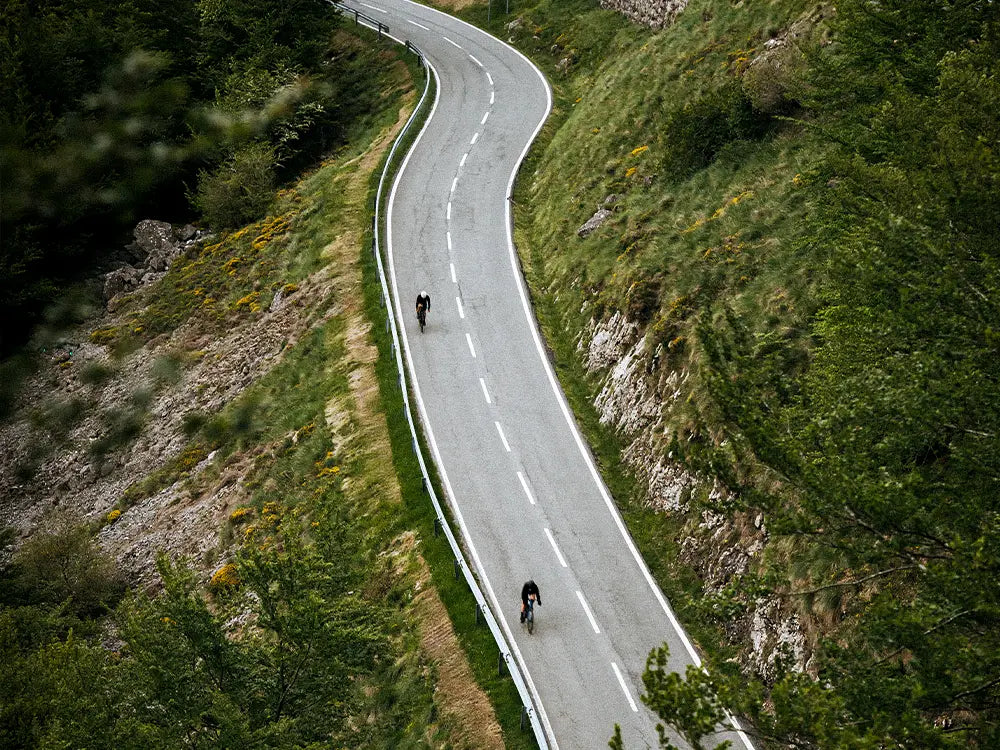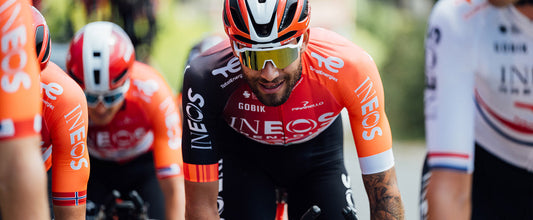Inma always carries a tailor measuring tape in her luggage, but not only that: "For the fitting of World Tour teams we carry very large suitcases, with more than 250 garments between jerseys and bib shorts, both short and long, along with jackets, overalls, time trial clothing, sleeves, knee pads, leg warmers, gloves...". In addition to all this, they are accompanied by laptops and cell phones to record everything.
Inma Hernández, our hostess on this trip, works in Gobik's fitting team. She is part of a group of six people. This includes the pattern makers, Alicia, Marisa, Miriam and our protagonist, the team leader, Inma, with the supervision and the "cycling eye" of Alberto García, one of Gobik's CEOs.
But what exactly does the word fitting mean?
"In fashion, the term "fitting" refers to the process of adjusting the garment on a person's body, to make sure it fits correctly. It is an essential process to ensure that the garment has the right shape and dimensions for the rider's figure, providing comfort and aesthetics."
"The key elements that are evaluated during a fitting are the length of the sleeves, body, legs, as well as the width of all garments," says Inma.
The process
Unlike other parts of production, the work of fitting has a clear enemy in the fight against time: "The development of the World Tour garments requires the same as the development of any Gobik collection, with the handicap that we have less time to do it, because on January 1st all the garments have to be manufactured and we don't start fitting until October".

October is the month of travel, but before that "we have to generate all the necessary documentation: define which models the teams need, prepare size kits and generate all the individual files for each rider".
In essence, it's very similar to the work done at custom works. We develop the pattern in base sizes (2XS, XS, S, M), pass it on to our design partners for graphics.
Then, the usual process for each garment: cutting - calendering - vinyling - preparation - packaging.
The finesse of the work goes to great lengths: "We have a special graphic for fitting that allows us to measure by centimeters the fit of the runner."
The moment among cyclists
Once in the room with the riders, "we set up a kind of showroom," Inma continues, "with all the garments pressed, by size and type of use. It usually takes a little over half an hour per rider.

Here they try on jersey and bib. The measurements of the cyclist are taken according to the sizes they usually wear, and on this the measurements of the cyclist are taken following all possible parameters: chest, waist, hip, waist, waist, back width, long sleeve length, short sleeve length, leg length, arm circumference width and thigh circumference width.
In this way, all the garments are tried on, starting with the underwear and racing gear, and ending with the training, winter and accessory garments.
An important detail: "As the garments have to fit like a second skin, we try them on the bike.
The result
A good fit "allows us to perfect and optimally adapt the garment to different cyclists so that it is flattering, comfortable and fits each rider's unique shape. It also improves aerodynamics; the fewer wrinkles, the less turbulence in the air and the better the aerodynamics".
Behind the fitting
Inma reminds us that "we do all this in parallel to the development of the next Gobik collections, so you can understand that our day-to-day is quite dynamic, with weekly meetings so that all the people involved in the different projects are on the same page".
All in an environment that is very good. "We always travel with the same six people, we know each other and we are well organized so that the work is fast and efficient. In addition, the cyclists and all the teams treat us very well."

Figures that explain the volume of work: "In Movistar's last fitting we sized about 40 riders and in FDJ's fitting 14. That's a lot of riders in a short time, but having everything well prepared is usually quite agile. Of course, "in each fitting there is something new that surprises us and that we learn from. It's very interesting to get direct feedback from the riders about the product.
The work that never ends
"All the information we prepare is updated throughout the campaign, because many cyclists lose up to one size at the end of the season, so it is essential to know the weight of the riders during all these months," says Inma.
In this wheel that never stops, she recalls that "in the middle of the season we create a new garment for the Tour de France or La Vuelta. As we have the measurements of each rider, we play it safe when adjusting the pattern".













